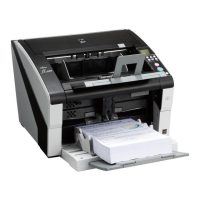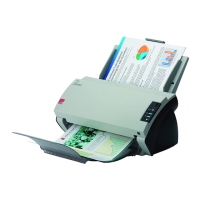F.5 Viewing the e-Mail Address Book/Local Accounts
441
■ Loading from a File
Load e-mail address books or local accounts from a file in the following ways.
1. Select the [Address Book] tab to load e-mail address books.
Select the [Local Account] tab to load local accounts.
2. Perform either of following operations:
Select the [File] menu [Load from File].
Press the [Load from File] button on the toolbar.
The dialog box for opening a file appears.
3. Select the file and press the [Load] button.
e-Mail address books or local accounts appear.
■ File Format of e-Mail Address Book Loaded from a File
This section describes the file format available for an e-mail address book that can be
loaded from a file.
With User Editor, an e-mail address book in CSV format can be edited.
UNICODE (UTF-8) is used for the file character set.
Describe in CSV format as follows:
"User Name","Group Name","Distribution List Name","First Name","Last
Name","E-mail Address"
The values for each item are as follows.
Item Value and Format
User Name Specify the name of the user.
Group Name Specify the name of the group. (*)
Prepend "\" at the beginning of the group name. (Example:
\group01)
To set the levels of the groups, delimit them with "\". (Example:
\group01\group02)
";" and "@" are replaced with "_".
Distribution List
Name
Specify the name of the distribution list. (*)
Multiple e-mail addresses must be separated using semi-colons
(";").
";" and "@" are replaced with "_".
First Name Specify the first name. (*)
Last Name Specify the last name. (*)
E-mail Address For details about e-mail address settings values, refer to "B.1 e-
Mail Address Setting Values" (page 408).
A distribution list can contain up to 100 e-mail addresses.

